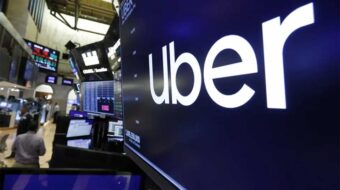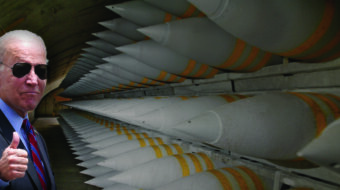In talking about the current Democratic majority and its fate in the 2010 elections, news editors have been using words such as “slipping,” “imperiled,” and even “doomed” in their headlines.
Reading such press, one gets the idea that the Republican Party is poised to take over the country and derail a nascent era of reforms even before it gets off the ground. Some say the GOP takeover will be, perhaps, on a scale as grand as the 1994 “revolution” led by Newt Gingrich.
But April, despite the messages from the Republican Party and their friends in much of the media, is a strange time to consider the fate of a November election. And even stranger to say it’s fate is sealed. Polls are notoriously misleading. People’s opinions are fluid. And the Republican Party is on the wrong side of virtually all issues important to the American people.
To see how the Republican Party’s program is exactly at odds with the desires of the people, all one has to do is look at the attitudes of the public towards Wall Street, and then at the Republicans in Congress, where they act as the chief defenders of the Goldman Sachs and their ilk.
Plus, the experience of the New York City 2009 mayoral election is instructive. Voters were told for weeks, even right up to Election Day, that the mayoral race would be a blow out. Billionaire Mayor Michael Bloomberg would defeat Democratic challenger Bill Thompson handily, the pollsters screamed. The big question, according to the pundits, was whether Thompson would lose by more than 20 points, or less.
But hardly anyone in real life seemed to be saying they liked Bloomberg. The most common refrain was, “Why bother voting? He has it in the bag.” In essence, the media was operating in Bloomberg’s camp, trying to create a self-fulfilling prophecy.
The polls were wrong. Bloomberg won by less than five points, despite predictions of victory by a historic margin. Bloomberg spent $200 million, more than any other municipal candidate in the history of the world. How come he won by such a small margin? How were the polls so wrong?
Polls focus on “likely voters” and “prime voters” (those who’ve voted in the past few elections, in primaries and in off-year elections). But others have begun to register and vote. Obama won in 2008 based on the mobilization of millions of people who had never voted before. These newly-energized people weren’t counted in the polls then, and still aren’t.
Polls also fail to take into account the state of the movements around candidates, in this case, Thompson and Bloomberg. The state of movements leads to another question: How did David come so close to slaying Goliath?
Bloomberg had the support of Wall Street and lots of money, and a mass base of people he had won over through a combination of coded racism and fake liberal rhetoric.
But around Thompson was a potentially more powerful coalition. He had the African American, Latino and Asian elected leadership in the city, as well as the clergy and other leaders of those communities. These communities came out strong for Thompson. Further, huge sections of the labor movement were behind the Democratic candidate: AFSCME District Council 37, the Transport Workers Union Local 100, and other unions in the city. These unions were able to mobilize tens of thousands of members, as well as provide a grassroots, organizational backbone to the campaign.
It was this powerful movement that was able to bring Thompson so close to victory.
David was able to cause Goliath a great deal of pain, but his slingshot didn’t mortally wound. Influences of racism and Bloomberg’s bucks had an impact. But the most significant factor that kept Goliath alive was a divided labor movement. While two of the biggest unions went with Thompson, three of the others either didn’t endorse or went with Bloomberg. Consequently, tens of thousands of working people weren’t mobilized, and the organization was weakened.
In contradiction to the mayoral race, the coalition came together completely in the race for city comptroller. The entire labor movement, all of the communities of color, the LGBT community and many others came together behind John Liu. Liu was running against three other candidates, all of whom Wall Street backed in an attempt to crush him. But with this coalition’s support, he won 40 percent in a four-way race, and crushed his Wall Street opponent in a run off. The coalition, when united, crushed Wall Street and its candidate.
If we want to make sure the Republican extremists don’t take back the House and Senate, the movement that elected Obama-mainly labor unions, the African American, Latino and Asian communities, women and young people-has to come together in states and congressional districts across the country.
Good news is many are already mobilizing for the November mid-term elections. And many key coalition constituents are at work around big issues: health care, jobs, immigrant rights. This helps to build unity, momentum and score victories.
That’s why I am boldly predicting the Democrats will hold onto their majority, and pick up a few seats to boot.

MOST POPULAR TODAY

High Court essentially bans demonstrations, freedom of assembly in Deep South

UN warns that Israel is still blocking humanitarian aid to Gaza

Resource wars rage in eastern Congo, but U.S. capitalism only sees investment opportunity

U.S. imperialism’s ‘ironclad’ support for Israel increases fascist danger at home







Comments